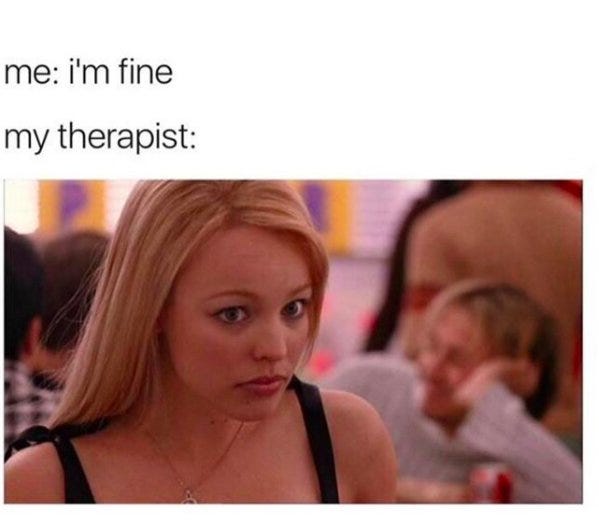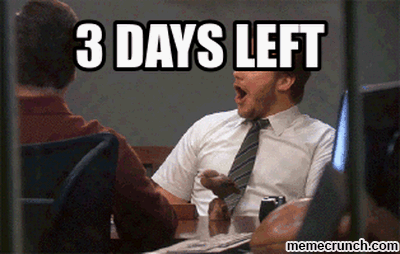Latest news about Bitcoin and all cryptocurrencies. Your daily crypto news habit.
Over the past few months, I have been called upon several times to play the role of technology therapist — a role that is sure to be more and more necessary for future generations as technology becomes more intertwined with our daily lives. When talking to my “patients,” I find myself asking these core questions:
- When did you start using a smart phone?
- How many apps do you currently monitor?
- How many times do you check your phone daily?
- How often is your smart phone at your side?
- How has social media influenced your relationships?
- Do you feel anxiety when someone doesn’t respond to you right away?
- Do you feel judged on the content you share online or pressured to share specific content on social media?
- Which social media platforms do you currently use?
- Have you ever taken a hiatus from social media? Which platforms?
The beautiful thing about approaching the age of 3–0 is that I can share as an older Millennial, I am part of a group of youth who grew up to be technology literate but not dependent. I didn’t get my first cell phone until I was 15, and even then it wasn’t easy to text like it is now, so I mostly used my phone for emergencies and to call my parents. Instead, I learned how to communicate completely face-to-face, without the aid/distraction of technology.
Today, the world is a radically different place. In the time it takes me to go from my house to the gym, I can have Instacart deliver my groceries, post pre-scheduled Tweets through Buffer without being on Twitter, and play my favorite Spotify playlist (Shout-out to Andrew Ash) without using any data on my phone. It’s quite brilliant.
But it can also be addicting and enabling. So where is the balance?
As a frequent traveler, I am blessed to have seen (and attempted to use technology in) a lot of the world. Last year when I was getting ready for a trip to Nepal, I started thinking about my technology usage. Recognizing that the Wi-Fi in the Himalayas is probably spotty, I saw this as an opportunity to do a re-set and make some adjustments in my life that would help me take back control from technology.
What is most important to remember is that technology is a tool. So many of us use it as a distraction, or worse — as a part of our identity. Even if you’re Kanye West, I doubt anyone is going to remember what you tweeted a year from now, let alone in a decade.
If you assume the average human life span is 75 years, then it translates to be approximately 28,000 days long. Phew! So I hope you will take the next 72 hours to do your check-in.
In order to bring some balance back into our lives and use technology in ways that helps us (not harm us), I suggest exploring the following steps:
Step 1: Take a 3-Day Break
Sometimes folks recognize their unhealthy relationship with technology but go too far in the opposite direction and delete their accounts altogether. Instead, I suggest taking a 3-day break. That said, I’m not about the common move of “leaving” Facebook as if you are going on vacation. You need to really commit by removing the app(s) from your phone completely; changing your settings, and leaving Facebook.
Ask your friends to give you a shout-out via text instead, or just give you a call. I know it can seem weird to pick up the phone, but trust me, you’ll be fine!
After all of that is done, you’ll probably notice yourself craving one or more applications. This is when you need to ask yourself why. Is it because you want to stalk someone? Do you want to distract yourself by looking at memes? Do you want to get lost in past memories and look through your photos? Think carefully about what exactly it is you’re missing and how else you can meet those needs (preferably without technology).
Countdown Check-In:
Hour 1: I’m totally ready to take on this challenge! Delete dis clutter, I already feel light.
Hour 2: F*ck, what I have gotten myself into…I just pick up phone and assume something is going to happen. I guess I could play a game on it…does that count? I’ll reorganize my clutter and delete old voicemails. I might even clean the case. Look at that…
Step 2: Focus On Activities You Love and Track Your Behavior
We’ve all heard about people charging their phones outside of their bedrooms or keeping their phones on silent during the weekends. There are even some more extreme people who delete apps during vacation…we should focus on why they try these things: they want more time with their friends and family, they want to be more productive at work or they want to space to do other things like reading. The cost for giving your attention to one place, one device, one anything is a limiting move and you might miss the opportunities for fulfillment in other areas of your life.
I know firsthand how hard it can be to open yourself to the unknown and to new routines. While in Nepal, I had the pleasure of being completely distracted by traveling in another country and meeting new people every day. This made it easy to fill my day with me-type events, and I strongly encourage you to do the same. Do you like going to the farmer’s market, do you like to paint, or even having a brunch mimosa with friends, whatever it is, fill up your new free time with stuff for you.
Next, gain awareness on your behaviors. The first day of my trip, I felt like I was missing something without my phone in my hand. I also experienced some minor anxiety when I thought about leaving my phone in my hostel room. What would I do if there was an emergency or someone was trying to reach me? Truthfully, the emergency thing is a real concern, but statistically speaking, I think we can play smart here and say it’s not dire to leave your phone behind and go explore.
While hiking in complete beauty, I began to have anxiety about not taking any photos. But then I stopped and asked myself who I wanted to take photos for and whether anyone else really cared about what I was seeing in that moment. In the interest of full disclosure, I’ll admit that I did have my GoPro with me which (unfortunately) had a damaged SD card so I don’t have any footage of making it to the Mt. Everest Base Camp. The truth is, however, that I’m not even bothered about it now. I know it happened, and I do have a few pictures to commemorate it, but it’s about the journey always. Let it all go, folks, live in the moment, and be bored.
Without my phone, I found myself watching the day turn. When was the last time you just sat and watched the hours pass? One morning I left my hostel room and spent the entire day in the ground floor lobby chatting with strangers, watching the breeze ruffle the leaves, eating glorious curries, and just chilling out. It sparked different ideas and emotions, it was so telling to focus on the connections we were making, and how we communicated with each other. You see body language and facial expressions in a different way without the filter of technology.
While it may sound like woo-woo new-age jargon, what I’m actually describing here is making human connections without the facilitation of technology. By connecting face-to-face, we build a bond not of memes or snaps but of stories, shrugs, and sighs. It’s very much a human story, and one that I forget how much I love to engage with until I find myself back in the thick of it.
Hour 40: Okay, this isn’t so bad. I actually finished a book for once, and liked it. So…now what?
Hour 52: The “itch” is wearing off. I’d love to post something about the amazing dish I just made… Oh well.
Step 3: Recognize What You Do Miss | It’s Okay to Love Your Apps
It’s easy to fall into the shame game pretty quickly. I’m here to tell you that it’s totally fine to love your applications. After all, there’s a reason they have became so popular and influenced our behaviors so quickly. So the awareness comes from what you miss — what do you miss?
For me, it was Instagram. I do have some regret that I wasn’t able to take amazing pictures of my trip that I could look over and remember those moments as though they had just happened, but those images aren’t gone, they’re just in my memories for me to uncover and cherish.
While I was on the trip, I also missed spending my early mornings and late nights laughing at memes and sharing them with my friends. I often start and end my day that way so that it begins and ends with laughter, and it would have been nice to keep up that habit while I was away. It’s always fun for us to stay connected across the globe by sending each other a giggle that says “I’m still thinking about you and you’re still my fam.” As a side note: shout-out to Betches for being my top fave.
Hour 68: I can’t wait to redownload Insta and see get caught up on meme game. Actually more importantly, I can finally keep a record of my food again. YAS.
Hour 72: That was pretty healthy, actually! I guess I don’t need Twitter in my life on the daily, I can keep that removed and I don’t need these other apps. I’ll keep a Facebook account to stay in touch with friends, but I’ll only access it on my desktop and when I’m not focused on work. Cool. Not bad.
After completing these 3 steps, I hope you walk away with some new insights around your habits, behaviors, likes, dislikes, and what matters to you. At the end of the day, it’s about stepping back into the driver’s seat of your life and not being funneled to a place that isn’t working for you.
Guess what? We have no rulebook on how our relationships with technology are going to develop in the future or how humanity will evolve behaviorally over generations with access to knowledge and likes at our fingertips.
Balance is important in all things. I found this exercise helps me understand what’s most important and identify areas in which I can grow. And, most importantly, it helped me see strengths I already had — like forming relationships — that I had taken for granted.
Are you ready to take the plunge? Tell me how it goes by your comments below.
Tech Therapy Check-Ins was originally published in Hacker Noon on Medium, where people are continuing the conversation by highlighting and responding to this story.
Disclaimer
The views and opinions expressed in this article are solely those of the authors and do not reflect the views of Bitcoin Insider. Every investment and trading move involves risk - this is especially true for cryptocurrencies given their volatility. We strongly advise our readers to conduct their own research when making a decision.

